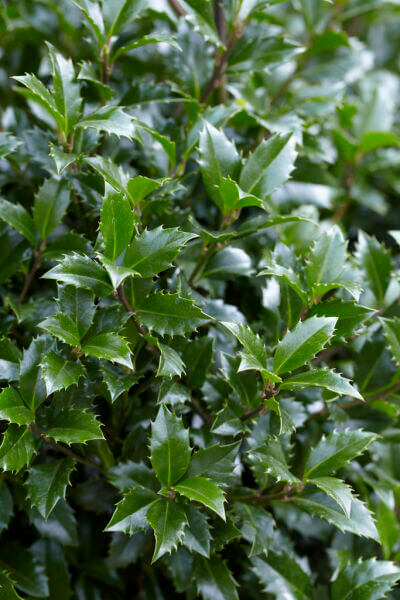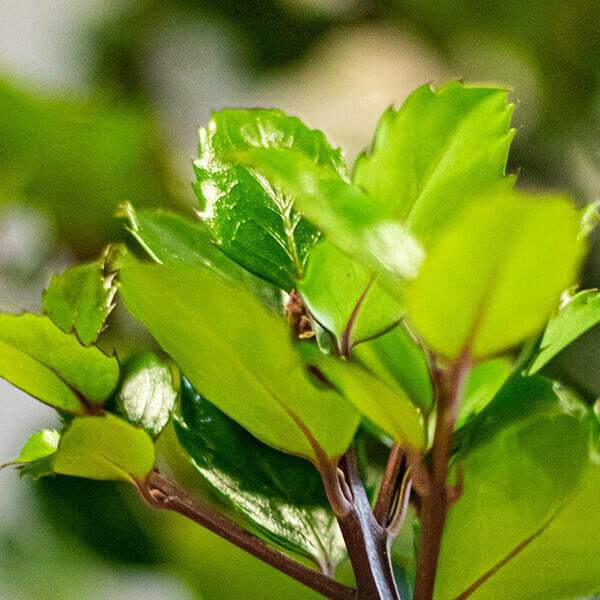Shade-tolerant Hedge Plants
Shade-tolerant Hedge Plants
Blog Article
Best Hedging Plants For Creating Enclosures
Boost your garden's allure with lush hedge ranges such as Yew (Taxus), Thuja, Laurel, Photinia, and Bamboo, celebrated for their structural integrity and environmental advantages.
Yew and Thuja supply evergreen coverage and winter durability, while Laurel uses fast development and broad, fragrant leaves.
Photinia adds seasonal appeal with its lively red foliage, and Bamboo provides a low-maintenance, serene atmosphere.
These hedges improve air quality, minimize noise, and develop tranquil, private spaces.
Proper planting, spacing, and upkeep ensure energetic development and ecological harmony.
Explore how these rich ranges can raise your garden's charm and well-being.
Secret Takeaways
Change Your Garden With Lush Hedge Ranges
- Select Yew for its dense, evergreen growth and unrivaled durability.
- Go with Laurel for its fast growth and broad leaves, guaranteeing fast privacy.
- Choose Photinia for its dynamic seasonal foliage, which turns a striking dark red.
- Use Bamboo for a low-maintenance, winter-hardy hedge with visual appeal.
- Area plants 2-3 per meter and prune regularly for optimal growth and health.
Popular Hedge Plants
When transforming a garden with lush hedge ranges, it's vital to consider popular hedge plants such as Yew, Thuja, Laurel, and Photinia due to their special characteristics and benefits.
Yew (Taxus) is highly esteemed for its durability and thick, green development, making it a prime option for sustaining landscapes.
Thuja is noted for its evergreen foliage and robust winter season resilience.
Photinia adds seasonal vibrancy with red leaves that darken in time, producing vibrant visual appeal.
Laurel uses quick development and fragrant, broad leaves, perfect for fast personal privacy.
Additionally, Bamboo is an outstanding option for ambiance, providing a low-maintenance, winter-hardy option that enhances the garden's visual with its sophisticated, swaying walking sticks.
These selections cater to a variety of horticultural needs and preferences.
Advantages of Garden Hedges
Garden hedges use a plethora of benefits, making them a valuable addition to any landscape. These natural barriers are cost-effective to carry out and offer significant wind defense, boosting air flow and contributing to noise reduction. The dense foliage of hedges like Thuja and Beech makes sure personal privacy by obstructing visibility, creating a remote and peaceful environment.
Hedges also play a crucial function in microclimate policy, offering a stable environment that cultivates plant growth and minimizes temperature level fluctuations. Their elaborate leaf structures filter pollutants, enhancing air quality and contributing to a much healthier garden ecosystem.
Additionally, hedges excel in sound reduction, soaking up and deflecting sound waves to lower ambient noise levels. This dual performance of supplying both visual and acoustic personal privacy enhances the total serenity and visual appeal of any garden.
Planting and Upkeep Tips
For an effective hedge, precise preparation of the planting area is crucial. Make sure the soil has proper pH and drain to support strong root development.
Area the plants properly for the selected species. Water the hedge frequently throughout its initial development phase, changing as needed with seasonal modifications.
Implement a methodical bug control and illness prevention method, using chemical or natural treatments when essential. Regularly inspect for aphids, termites, and fungal infections.
Apply mulch to maintain wetness and suppress weeds. Seasonal pruning promotes dense development and air blood circulation, necessary for plant health.
Following these guidelines will help you cultivate a dynamic, well-kept hedge that boosts the beauty of your garden.
Spacing and Trimming Guidelines
Spacing and Trimming Standards
Appropriate spacing and trimming are important for cultivating healthy, aesthetically appealing hedges. Appropriate spacing makes sure each plant gets enough nutrients, light, and airflow.
Follow these standards for optimum hedge upkeep:
- Spacing: Position hedge plants 2-3 plants per meter to motivate robust development.
- Pruning Techniques: Regular pruning is important for maintaining desired hedge height and shape. Trim brand-new development in summer season and cut down older wood during winter.
- Seasonal Care: Adjust cutting schedules and techniques according to seasonal requirements to ensure plant health.
- Hedge Height: Regularly display and cut to keep the preferred hedge height and achieve uniform aesthetics.
Sticking to these steps will guarantee your hedge prospers, improving both the appeal and functionality of your garden.
Picking the Right Hedge
Selecting the Right Hedge
Choosing the suitable hedge involves examining elements such as mature height, foliage density, and ecological resilience. Successful hedge plant selection needs comprehending each species' development characteristics and site-specific versatility.
For instance, Yew (Taxus) uses excellent durability and dense development, while Thuja is Additional reading noteworthy for its winter season durability. In addition, considering maintenance requirements is essential; fast-growing species like Laurel or Privet need routine cutting, whereas low-maintenance options like Bamboo or Ivy might be more suitable for those looking for very little maintenance.
Ecological aspects such as soil type, light availability, and moisture conditions ought to also direct the selection process. This mindful approach guarantees the selected hedges will prosper, offering both practical and visual benefits to the garden landscape.
Delivery and Planting Suggestions
To guarantee your hedge plants prosper, they must be provided by specialized couriers and planted quickly upon arrival.
Follow these important steps for effective planting:
- Soil Preparation: Enrich the soil with raw material to enhance drain and nutrient content.
- Planting Depth: Produce a trench twice the width and equivalent to the depth of the root ball.
- Watering Strategies: Water thoroughly after planting, keeping the soil consistently damp but not saturated.
- Mulching: Apply a layer of mulch to maintain wetness and suppress weeds.
Customer Support and Service
Offered the vital function of timely help in horticultural pursuits, our client support group is readily available six days a week through telephone, e-mail, and social media to offer skilled guidance and promptly attend to any concerns. Their commitment to quick reaction times ensures consumer complete satisfaction by resolving inquiries related to plant health, ideal planting methods, and maintenance schedules.

Schedule
Within 24 hours
This extensive support group, enhanced by an outstanding 9.3/ 10 customer ranking, highlights our commitment to enhancing the gardening experience for every single client.
Frequently Asked Concerns
How Long Does It Consider Hedge Plants to Establish?
Hedge plants normally require one to 3 years to become completely established, with the precise period differing by types and growing conditions.
Efficient care during this important duration is vital for robust growth. Consistent watering, alert weed control, and appropriate fertilizer application are critical in promoting strong root advancement.
For example, fast-growing types like Laurel might establish faster, while slower-growing varieties such as Yew may take longer. Diligent maintenance speeds up the facility process, resulting in healthy and thick hedges.
What Are the Best Hedge Plants for Privacy?
The concern of the finest hedge plants for privacy involves assessing evergreen and deciduous alternatives.
Evergreen hedges like Thuja, Laurel, and Cypress offer year-round protection, making sure constant personal privacy.
In contrast, deciduous hedges such as Beech use seasonal privacy, shedding leaves in chillier months.
Key upkeep suggestions for privacy hedges consist of regular trimming, fertilizing in spring, and appropriate spacing-- generally 2 to 3 plants per meter.
In addition, consistent watering and diligent weed elimination are crucial for promoting healthy, dense development.
Can Hedge Plants Attract Wildlife to My Garden?
Yes, hedge plants can draw in wildlife to your garden by supplying essential benefits like shelter, food, and nesting sites, consequently enhancing regional biodiversity. For example, yew, holly, and laurel are excellent for drawing in birds, while ivy supports a variety of bugs.
However, it is necessary to note that there are some drawbacks, such as increased upkeep to handle insects and routine upkeep. Thoroughly selecting and preserving hedge ranges can help stabilize these disadvantages and advantages, eventually promoting a dynamic and sustainable community in your garden.
Are There Any Flowering Hedge Plants Available?
Yes, there are flowering hedge plants readily available that can boost the beauty of your garden.
For example, Elaeagnus, likewise called Olive Willow, produces fragrant white flowers in the fall, adding a touch of beauty.
Photinia, another popular option, showcases lively red leaves that mature into a rich green, producing a vibrant visual impact throughout the seasons.
To make sure these plants grow, it's important to practice proper pruning methods and seasonal upkeep, such as cutting brand-new development in the summer season and cutting back in the winter.
These measures will help preserve the health and visual appeal of your blooming hedges.
How Do I Avoid Bugs in My Hedge Plants?
To prevent insects in hedge plants, utilize natural insect control techniques and preserve appropriate hedge care. Present useful pests like ladybugs, which victimize harmful bugs, to develop a well balanced environment.
Frequently check your hedges for indications of problem and promptly get rid of any afflicted parts to avoid the spread. Guarantee the health of your hedges by applying balanced fertilizers and providing adequate water.
Make use of mulching to maintain soil wetness and appropriate spacing to decrease plant stress and promote robust growth. These practices collectively assist in minimizing bug problems and preserving a healthy hedge.
Conclusion
In essence, choosing the right hedge ranges such as Yew, Thuja, and Laurel can transform any garden into a tranquil sanctuary. These plants supply year-round greenery, enhance visual appeal, and deal practical benefits like sound decrease and wind defense.
Proper planting techniques, precise spacing, consistent watering, and seasonal trimming are vital for optimal growth.
Dependable shipment services and expert customer support guarantee a smooth experience from purchase to planting, making it simpler than ever to elevate your outdoor area.
Garden hedges provide a plethora of benefits, making them a valuable addition to any landscape. These natural barriers are affordable to execute and offer substantial wind defense, boosting air blood circulation and contributing to sound decrease. The thick foliage of hedges like Thuja and Beech makes sure personal privacy by blocking presence, producing a secluded and peaceful environment.

Pruning Strategies: Routine pruning is important for maintaining wanted hedge height and shape. Trim new development in summertime and cut back older wood during winter season.
Report this page